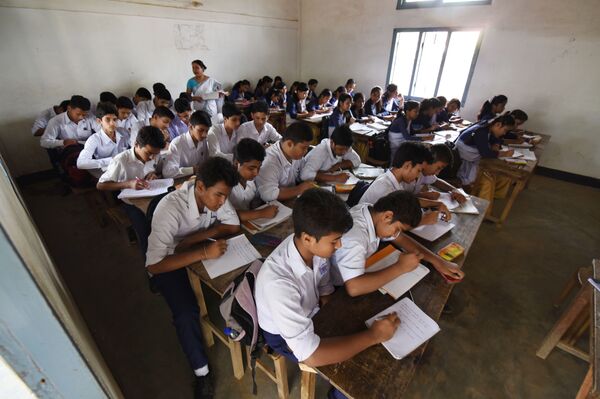Stating that India was in dire need of such a futuristic policy, the Indian government on Wednesday unveiled its New National Education Policy (NEP). From school education to universities, the reforms cover every aspect of the field. Here are major things which will be reformed under the newly-introduced policy.
- Foreign Universities Are Now Welcome
The Indian government has opened its doors for top foreign universities to set up campuses in the country in a bid to boost the quality of education. This comes after a variety of surveys conducted by non-profit organisations found that 80 percent of Indians with engineering degrees are not fit for a job in the knowledge economy, while only 2.5 percent possess the tech skills in artificial intelligence required by the industry. Now well-performing Indian universities will also be allowed to establish campuses abroad.
- Boost Learning in the Mother Tongue
The new education policy urges the schools to use the local language of the region (India has many languages) as a medium of instruction until fifth grade. This will replace English being the common means of communication in schools. The policy emphasises that the states can decide which language to choose. A special emphasis has also been placed on Sanskrit.
- Dropping Higher Education Programme M.Phil
The new policy has proposed that the higher education degree M.Phil be discontinued, and students will be allowed to pursue a Ph.D directly after completing a Master's degree. Earlier, M.Phil. was a bridge between the Master's degree and Ph.D.
- No Rigid Course Segregation
The Indian curriculum has three rigid division - Arts, Commerce and Science - that students chose between after finishing their 10th grade exams. However, now the streams have been made flexible; a science student can chose subjects from the arts or humanities.
- Changes in Undergraduate Course Duration
The government has also introduced a four-year undergraduate programme to replace the three-year course. As per the government's instruction, the policy would make the programme more holistic and skill-oriented. The four-year programme was introduced previously, too, but was eventually discontinued due to growing discontent among the students and some academics.
- Multi-Disciplinary Approach to Universities
The universities will now have to teach all three streams - Art, Science and Commerce, in order to curb the single-stream institutions. The government plans to curb these single stream universities and institutes by 2040.
- New Pedagogical Structure
Instead of the 10+2 school education formula, the system will be transformed so that the first 5 years, including children from pre-school and the first and the second grades (age 3-8), will now be a part of the foundation learning school. Falling in line, the government schools will now be offering pre-school - nursery and kindergarten.
Meanwhile, the country has also renamed the Human Resource Development Ministry the Education Ministry.






